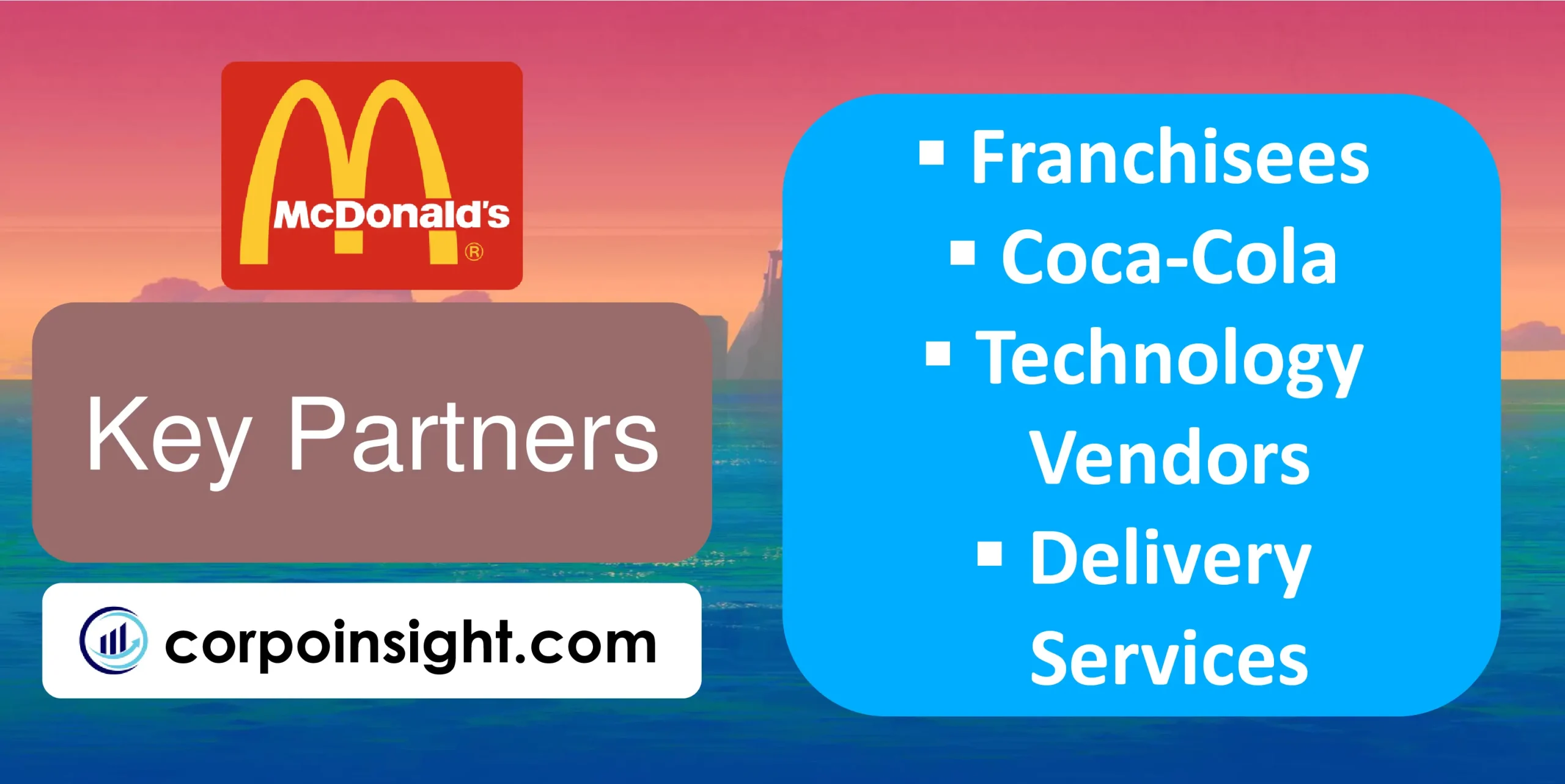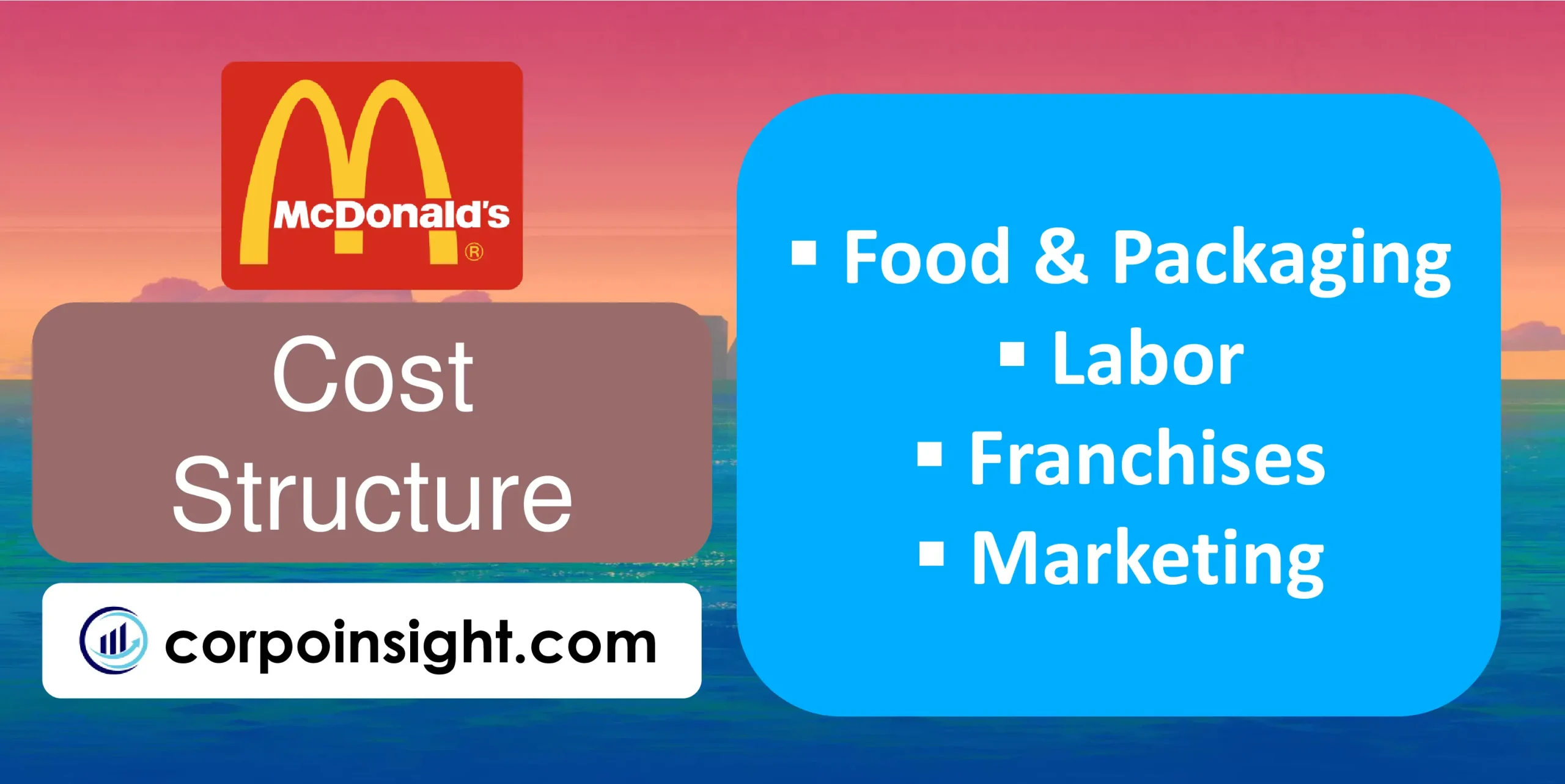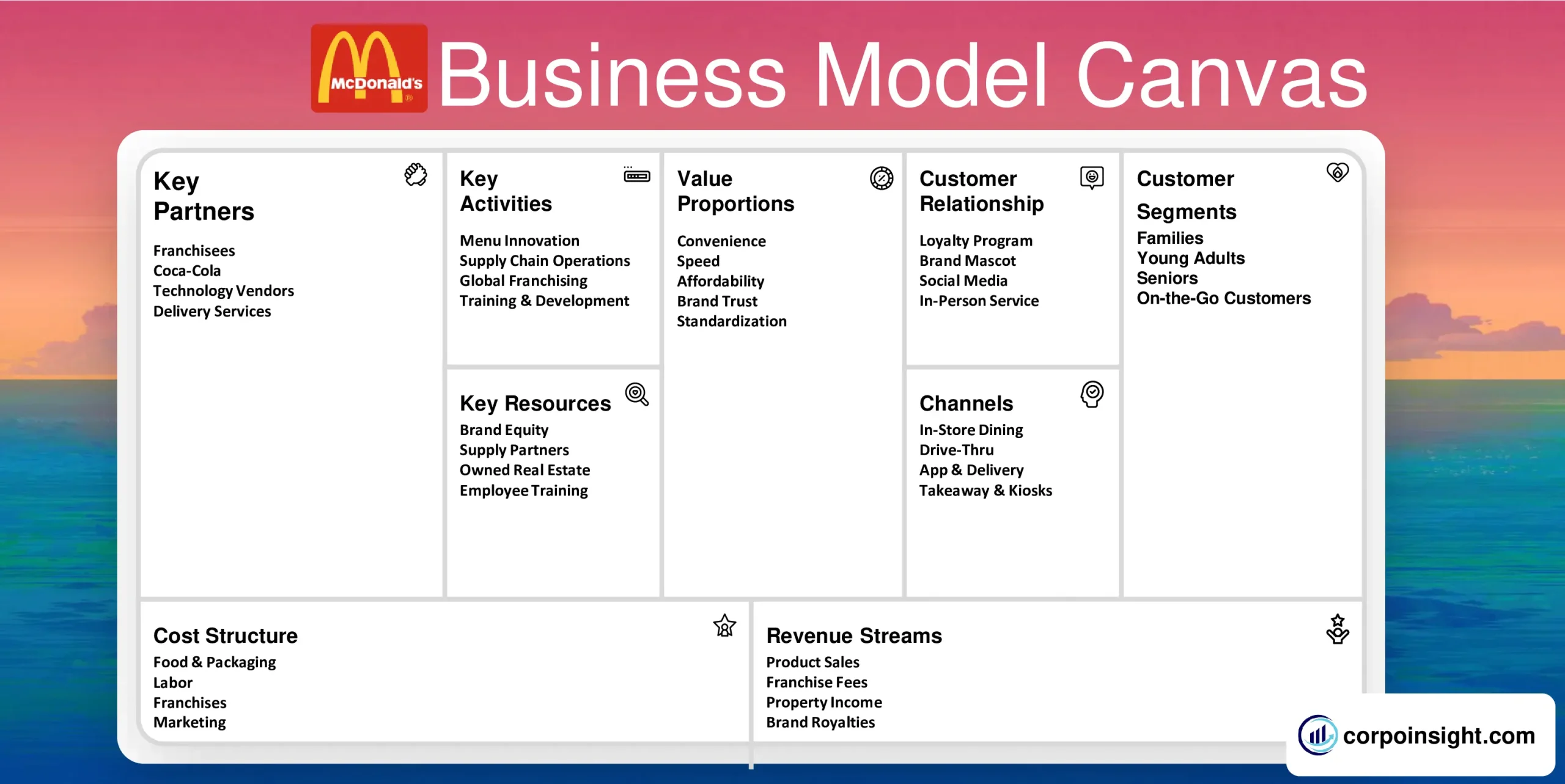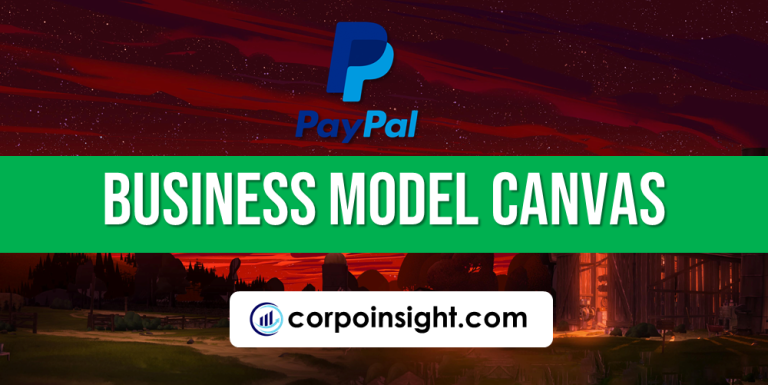McDonald’s Business Model Canvas 2024
McDonald’s name has reached every part of the world, and so is its branches, as it has 40,275 locations all over the world. As we deep dive into the company, we will get to know more about McDonald’s business model canvas, such as customer segments, value proposition, revenue streams, channels, customer relationships, key activities, key resources, key partners, and cost structure.
Interesting fact!
McDonald’s once created a luxury restaurant called McDonald’s flagships that served fancier meals like paninis and pasta dishes.
McDonald’s Competitors
Burger King | Wendy’s | Subway | KFC | Starbucks | Taco Bell | Domino’s Pizza | Dunkin’ | Pizza Hut | Chipotle
Customer Segments – McDonald’s Business Model Canvas

Families: Historically, McDonald’s most lucrative group, families comprise 32% of sales. The appeal lies in kid-friendly Happy Meals, PlayPlaces, and perceived affordability for cost-conscious parents spending $20-$25 per restaurant visit.
Young Adults: Adults aged 19-35 represent 26% of McDonald’s customers. They visit most in the morning for Egg McMuffins and coffee or late at night after socializing. Mobile ordering and discounts entice Millennials and Gen Zers to view McDonald’s nostalgically.
Seniors: At 65 million strong in the US, senior citizens keep McDonald’s coffee sales robust. Morning McCafé trips provide seniors aged 60+ a convenient value, community, and comfort food like hash browns and sausage biscuits they’ve enjoyed for decades.
On-the-Go Customers: Commuters and busy professionals take advantage of accessibility, with drive-thrus comprising 70% of McDonald’s sales today. Speed, consistency, and operating hours work for dual-income homes or anyone desiring quickness along their daily routes.
Value Proposition – McDonald’s Business Model Canvas

Convenience: With over 14,000 locations in the United States alone, McDonald’s offers unmatched access for those valuing quick service and ubiquity. Drive-thrus serve up to 145 customers per hour, higher than competitors.
Speed: McDonald’s kitchens use streamlined processes, enabling swift delivery even during busy rushes. Over 75% of products are served within 90 seconds of ordering, meeting expectations for fast food.
Affordability: While not the absolute lowest cost provider, McDonald’s wins on perceived value thanks to discounts, coupons, and Dollar Menu. A family of 4 can dine out with drinks and sides for under $25 total.
Brand Trust: Supply chain innovations allowing customizable burgers cooked on-demand plus legacy brand affinity built over decades prompt customer confidence in food quality and safety standards hard for newcomers to rival.
Standardization: No matter the global location or franchise ownership, McDonald’s has mastered process management so customers know to expect the same taste, prep, cleanliness, and hospitality with every visit.
Revenue Streams – McDonald’s Business Model Canvas

Product Sales: McDonald’s grossed $45+ billion in 2023, predominantly from food and beverage sales across 120+ countries. Burgers, fries, chicken, soft drinks, etc., provide the majority of revenue both in stores and via drive-thru and takeaway.
Franchise Fees: The company annually collects over $11 billion in fees from franchisees who operate 90% of all locations. Fees include monthly rent and service payments taken as a percentage of gross sales on top of the initial franchise purchase.
Property Income: Rather than full ownership, McDonald’s strategically acquires retail land and buildings and then leases sites to franchisees. This provides another $8+ billion in annual income from restaurants in prime locations.
Brand Royalties: McDonald’s also earns royalties between 4-5% on all sales for the use of the McDonald’s name logo and providing training plus order taking and processing via company HQ.
Channels – McDonald’s Business Model Canvas

In-Store Dining: While drive-thru reigns supreme, all 14,000+ US locations feature interior seating, allowing for convenient walk-in, dine-in Family meals, group gatherings, or placing kiosk orders at your own pace without vehicles.
Drive-Thru: As the channel serves 70% of McDonald’s customers, drive-thru leverages convenience and familiarity while increasing order size. Dual-lane drive-thrus with exterior menu boards facilitate billions in global sales annually.
App & Delivery: McDonald’s app sees over 30 million monthly users, indicating strong digital demand. The company partners with Uber Eats, DoorDash, and others to meet rising delivery demand, now representing 5 billion+ in sales.
Takeaway & Kiosks: McDonald’s takeaway, standalone McCafe, and kiosk ordering options promote accessibility amid urban sites with less room for dining yet consistent throngs of patrons. Self-order kiosks now enable customization site-wide.
Customer Relationships – McDonald’s Business Model Canvas

Loyalty Program: MyMcDonald’s Rewards program has exceeded 30 million members since launching in 2021, offering deals and incentivizing visits via app-based points and freebies for engagement.
Brand Mascot: Ronald McDonald remains one of the most recognizable mascots, building emotional connections with children and families since the 1960s via in-store magic shows, charity events, and sponsorships.
Social Media: McDonald’s engages over 12 million Facebook followers and 3.5 million Twitter fans, posting content celebrating community, fan nostalgia, and new menu launches. Digital direct response enables real-time service recovery.
In-Person Service: McDonald’s company-owned locations instill customer experience basics around speed, accuracy, and hospitality, with store turnover rates below the industry average at 60%, indicating better rapport between crews and visitors.
Key Activities – McDonald’s Business Model Canvas

Menu Innovation: McDonald’s employs top culinary chefs to continuously enhance its menu, balancing classics like the Big Mac and McNuggets with segment-targeted items from McAloo Tikki to premium sandwiches, showcasing an innovation pipeline unmatched in quick-service.
Supply Chain Operations: Via 600+ distribution centers and 175+ approved suppliers, McDonald’s leverages its unparalleled size to achieve efficiencies in sourcing, transport, and inventory while integrating analytics on customer preferences and emerging food trends to guide purchasing.
Global Franchising: Through over 38,000 locations spanning 100+ countries, the McDonald’s franchise model allows successful hyper-localization attuned to regional tastes and norms while company HQ ensures brand standards, achieving global ubiquity other QSR brands aspire towards.
Training & Development: Hamburger University and over 4,000 instructors deliver unrivaled training plus leadership and growth opportunities, leading to manager tenure of 15 years on average and mitigating rampant crew turnover endemic to fast food.
Key Resources – McDonald’s Business Model Canvas

Brand Equity: After over 80 years, the Golden Arches remain a globally trusted symbol of consistency, family connection, and Americana, evidenced by brand value estimates nearing $150 billion.
Supply Partners: McDonald’s over 175 approved suppliers spanning meat, dairy, produce, bakery, and paper goods enable access to top inputs discounted up to 15% below open market rates, a formidable competitive edge.
Owned Real Estate: 5% of restaurants are company-owned (as opposed to 95% franchised), including prime retail land and buildings selectively retained, producing billions in lease income from franchisees along with market intelligence insights.
Employee Training: Hamburger University stands as the heart of unparalleled frontline team member training that’s yielded management tenures over 15 years and the source of smiling service spanning languages and cultures at a rate competitors struggle to replicate.
Key Partners – McDonald’s Business Model Canvas

Franchisees: The 90% of McDonald’s locations owned and operated by franchisees form the company’s most critical partner relationship. This enables global scale along with a vested interest in the brand’s success from small business owners and their over 2 million employees.
Coca-Cola: For over 60 years, McDonald’s and Coca-Cola have maintained an exclusive partnership regarded as one of the food industry’s most successful joint ventures. It’s a symbiotic relationship spanning supply, innovation, and integrated marketing.
Technology Vendors: McDonald’s partners with industry tech leaders like IBM for AI-enabled drive-thru voice recognition, Microsoft for cloud and data, and Google for machine learning and analytics to embed cutting-edge capabilities, enhancing both customer experience and operations.
Delivery Services: By aligning with Uber Eats, DoorDash, and other delivery platforms under flexible terms, McDonald’s expands access to meet shifting consumer preferences for convenience while waiver of exclusivity clauses allows for future service testing.
Cost Structure – McDonald’s Business Model Canvas

Food & Packaging: Given massive purchase volumes, McDonald’s secures discounted rates around 15% below open commodity market prices on most ingredients, enabling consistent profitability margins between high-low-cost items.
Labor: Crew compensation comprises about 30% of restaurant operating budgets. While wage inflation and rising minimum wages squeeze margins, McDonald’s scalable labor model favors volume and efficiency over higher per-employee output.
Franchises: Rather than own the entire system, franchised locations allow entrepreneurs to shoulder local costs like equipment, utilities, and building maintenance that would otherwise fall to corporate. McDonald’s collects lucrative rent and royalties instead.
Marketing: From celebrity deals to Olympics sponsorships and social media, McDonald’s typically invested over $2 billion annually in advertising pre-pandemic to drive brand affinity. Shrewd, data-driven efforts optimally balance costs and sales lift.
Summary of McDonald’s Business Model Canvas

Conclusion on McDonald’s Business Model Canvas
McDonald’s unmatched brand ubiquity, operational efficiencies, supply chain innovations, and win-win franchise partnerships form the foundation of a robust business model that continues reinventing itself. Though facing rising labor and real estate costs, by leveraging global scale and actively listening to dynamic customer preferences, the Golden Arches structurally positions itself to thrive for years ahead as both an industry pace-setter and a staple of local communities worldwide.

This is Ahsanul Haque, someone very passionate about digital marketing, SEO, and Data Analytics and founder of the Analytics Empire and currently pursuing my major in marketing at Bangladesh University of Professionals.







